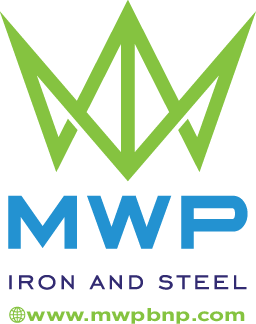Iron and Steel Pricing Factors:
Iron and Steel Pricing Factors: In the world of manufacturing and construction, iron and steel are the backbone materials that shape countless structures and products. Understanding the intricate dynamics of iron and steel pricing is pivotal for businesses operating in these industries. In this comprehensive guide, we delve into the factors that influence the pricing of iron and steel, shedding light on the essential components that drive the market. Let’s embark on this journey to unravel the complexities behind iron and steel pricing.
Supply and Demand Dynamics
At the heart of the iron and steel pricing mechanism lies the fundamental law of supply and demand. This dynamic duo exerts a profound influence on the pricing fluctuations of these metals.
Supply Factors
- Raw Material Availability: The production of iron and steel hinges on the availability of raw materials such as iron ore, coal, and scrap metal. Any disruption in the supply chain of these materials can send shockwaves through the industry.
- Production Capacity: The production capacity of iron and steel mills plays a crucial role. When mills operate at full capacity, it often leads to increased supply and consequently lower prices. Conversely, reduced capacity can result in scarcity and drive prices up.
- Trade Policies and Tariffs: International trade policies and tariffs can significantly impact the supply of iron and steel. Tariffs on imported steel, for instance, can limit supply within a region and push prices higher.
Demand Factors
- Economic Growth: The health of the economy has a direct bearing on the demand for iron and steel. Robust economic growth spurs construction and manufacturing activities, increasing the demand for these materials.
- Infrastructure Development: Infrastructure projects, such as bridges, roads, and buildings, are major consumers of iron and steel. Government investments in infrastructure can boost demand substantially.
- Automotive and Manufacturing Sectors: The automotive and manufacturing industries are heavy users of steel. Fluctuations in these sectors can have a ripple effect on steel demand.
Global Market Forces
Iron and steel pricing is not confined to regional boundaries; it’s influenced by global market forces. Here are some key aspects to consider:
Currency Exchange Rates
Fluctuations in currency exchange rates can affect the cost of imported raw materials and finished steel products. A strong domestic currency can make imports cheaper, potentially impacting domestic prices.
International Trade
The global steel market is interconnected, with imports and exports playing a pivotal role. Changes in international trade agreements and disputes can have far-reaching consequences on steel prices.
Technological Advancements
Advancements in technology have a two-fold impact on iron and steel pricing:
- Production Efficiency: Technological advancements in steel manufacturing processes can lead to increased production efficiency, potentially reducing costs and, in turn, prices.
- Product Innovation: Innovative steel products with enhanced properties or environmental benefits can command premium prices, influencing market dynamics.
Environmental Regulations
Environmental regulations have become increasingly stringent in recent years. Compliance with these regulations can add additional costs to production, which may be passed on to consumers through higher prices.
Market Speculation
Market speculation and investor sentiment can have a short-term impact on iron and steel prices. Traders and investors often react to news and events, causing price volatility.
Conclusion
In the world of iron and steel, pricing is a complex interplay of supply and demand dynamics, global market forces, technological advancements, environmental regulations, and even market sentiment. Understanding these factors is essential for businesses to navigate the industry successfully.
As you venture into the world of iron and steel, keep in mind that staying informed about these pricing factors can help you make strategic decisions and adapt to the ever-evolving market.
Quality Metal Fabrication: Crafting Excellence in Every Detail
